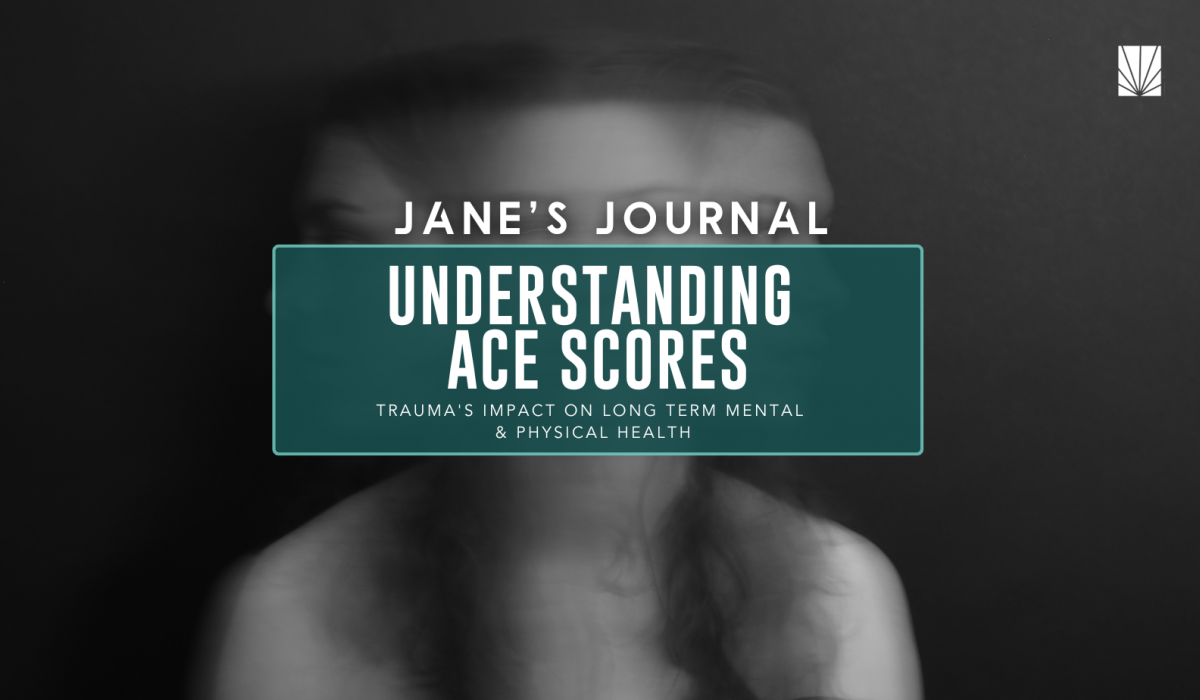
Understanding ACE Scores: Trauma’s Impact on Long Term Mental and Physical Health
There’s been a growing and much-needed awareness of the profound impact negative childhood experiences can have on our long-term health and well-being. Adverse Childhood Experiences, commonly known as ACE scores, have emerged as a crucial framework for understanding the potential repercussions of early-life adversities. These adversities can show up in our adult lives in the form of chronic mental and physical health issues, lack of employment opportunities, increased chances of becoming justice-impacted, and even early death. In this blog, we will delve into what ACE scores are, racial and socio-economic disparities among those surveyed, how ACEs are calculated, and why they matter in shaping individual lives. Overall, informing our individual and collective healing journey.
What are ACE Scores and Why Do They Matter?
ACE scores are numerical values assigned to individuals based on their exposure to various traumatic, and adverse childhood experiences. These experiences can include emotional, physical, or sexual abuse, neglect, household dysfunction such as substance abuse, mental illness, domestic violence, incarceration, divorce, or separation. The concept was first introduced in a landmark study conducted by the Centers for Disease Control and Prevention (CDC) and Kaiser Permanente in the mid to late 1990s and has since been researched further.
Racial and Socioeconomic Disparities Among Those Surveyed
The original CDC and Kaiser Permanente study found that although ACE scores are common across populations, they note some populations can be more vulnerable. A deeper dive into the prevalence of ACE scores among Black and Brown individuals suggests “in the United States, 61% of black children and 51% of Hispanic children have experienced at least one ACE, compared to 40% of white children”. This underscores the need for a more comprehensive understanding of how ACE scores impact people of different ethnicities and socioeconomic backgrounds.

Calculating ACE Scores
ACE scores are calculated by tallying the number of different adverse childhood experiences a person has undergone. Each type of adversity is assigned a point value of 1, so an individual’s ACE score can be measured from 0 up to 10 types., depending on the number and severity of experiences. For instance, if someone experienced physical abuse, emotional neglect, and had a family member with substance abuse issues, their ACE score would be 3. If someone has experienced all the above and was sexually assaulted as a minor, their score would be 4. The higher the score, the higher chance for negative health outcomes and risk of becoming justice impacted in adulthood.
The Impact on Health and Well-being
The groundbreaking CDC-Kaiser Permanente study revealed a strong correlation between high ACE scores and a wide array of negative health outcomes later in life. Individuals with higher ACE scores were found to have increased risks of chronic illnesses like heart disease, diabetes, mental health conditions such as depression and anxiety, and risks of becoming immunocompromised. Those with high ACE scores can also be more likely to engage in risky behaviors such as substance and nicotine abuse.
Understanding the Mechanisms
The link between adverse childhood experiences and negative health outcomes is not merely coincidental; it’s rooted in the physiological and psychological changes that occur as a result of chronic stress. Prolonged exposure to stress hormones like cortisol during childhood can disrupt the normal development of various bodily systems, including the immune, cardiovascular, and nervous systems. This disruption can set the stage for health problems down the line.
Furthermore, the emotional toll of childhood traumas can lead to maladaptive coping mechanisms. Individuals who have experienced ACEs might resort to self-destructive behaviors or struggle with interpersonal relationships due to unresolved emotional wounds. These unhealthy coping mechanisms and relationship styles cause further trauma and impede an individual’s ability to lead a healthy and full life.
Breaking the Cycle
Recognizing the far-reaching implications of ACE scores, experts emphasize the importance of early intervention and prevention strategies. By providing support and resources to families in need, communities can help mitigate the impact of adversity on children. Mental health services, parenting education, and creating safe environments for children are all crucial components of breaking the cycle of adverse experiences.
For adults who are only now realizing they have a high ACE score, there is still hope. The truth is that knowledge is power. Once we realize the impact our childhood experiences have on our lives, we become more equipped to face the resulting challenges. Finding a supportive community like the one at This is Jane Project can assist in the healing journey through nurturing supportive relationships to help build resilience.

The Power of Resilience
Not everyone who experiences adversity during childhood is doomed to a life of poor health. Resilience, or the ability to adapt and overcome challenges, plays a significant role in determining our individual outcomes. Positive relationships, access to education, and a supportive community can all enhance our resilience, even in the face of significant adversity. There is hope. Even for those thought to be hopeless.
Conclusion
ACE scores serve as a wake-up call, reminding us childhood experiences have a lasting impact on our lives. We don’t “grow out” of these experiences. In fact, they go on to inform our adult lives in unhealthy ways. By understanding the relationship between adverse experiences and health outcomes, we can work toward individual and collective healing. Through early intervention, support, and nurturing environments, we have the power to break the cycle of adversity and promote healthier, happier lives not only for ourselves, but for generations to come.
ACE, ACE scores, adverse childhood experiences, adversity, anxiety, cardiovascular system, CDC, childhood, chronic pain, collective healing, community, depression, diabetes, divorce, domestic violence, dysfunction, emotional neglect, emotional wounds, heart disease, immune system, immunecompromised, incarceration, Jane's Journal, Kaiser Permanente, maladaptive coping mechanisms, mental illness, nervous system, nicotine abuse, physical abuse, Racial Disparaties, resilience, sexual assault, Socioeconomic Disparities, substance abuse, trauma centered, trauma informed, trauma survivor

Christina
I just went to the Chicago event today. It was beyond amazing! I am so thankful for such a special healing experience.